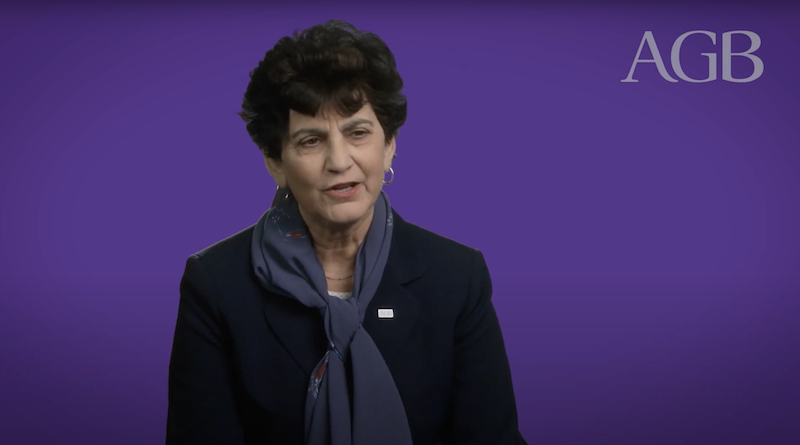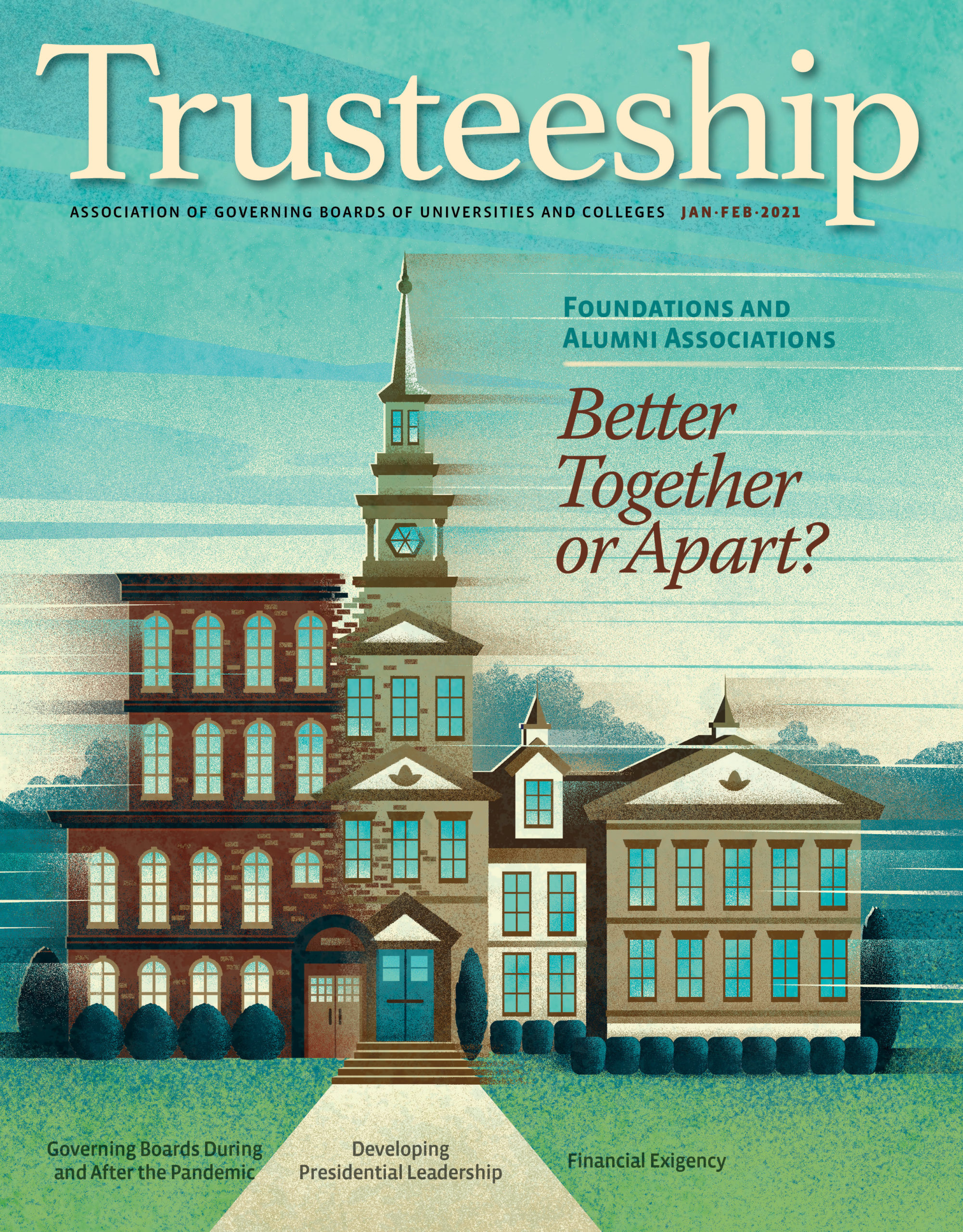Why this is important.
Shared governance is a foundational tenet of higher education. This principle “acknowledges the final institutional authority of governing boards and distributed authority to the administration and faculty.”1 Traditionally, governing boards delegate the responsibility of strategic planning and daily management to presidents, while faculty lead educational delivery. Delegation of authority between key constituents on campus strengthens institutions by championing meaningful engagement and inclusive, transparent decision-making.
“Effective shared governance strengthens institutions by serving as a vehicle for necessary change,” and such innovation is essential to confronting today’s uncertain higher education environment.2 Strong shared governance informs decisions. A governing board’s commitment to the practice of shared governance “bears fruit for the institution in the form of mutual trust in challenging times, support for innovation, and shared commitment to goals for building a stronger future.”3
Ultimately, shared governance is one of higher education’s most distinctive values and is key to the institutional success of all colleges and universities. It brings stakeholders together around passion for the institution and “ensures the inclusion of a range of voices and ideas in the formulation of goals, priorities, and strategies.”4 Together, these collaborative voices focus on holistic, strategic directions for the future.
Mary Papazian, PhD, AGB executive vice president, talks about sharing responsibility, creating buy-in, and balancing delegation with accountability.
Questions for boards.
Click below to reveal key questions for your board to consider:
Roles and Responsibilities
Consequential Questions:
- What are the roles of students and staff in shared governance at our institution? Is the board satisfied with their engagement?
- What can the board chair do to demonstrate the board’s commitment to shared governance? What does the president do?
Source:
AGB Board of Directors’ Statement on Shared Governance, AGB 2017
Processes and Alignment
Consequential Questions:
- How are new board members, faculty, and senior staff oriented to shared governance?
- When did our institution last assess the state of its shared governance? What was the result? On the basis of that assessment, what has changed?
- How does the board engage the faculty on matters of consequence?
- Are the priorities of the board, president, and faculty currently aligned on critical mission-related matters?
Source:
AGB Board of Directors’ Statement on Shared Governance, AGB 2017
Recommended resources.
We carefully curated these staff-picked resources for you:
Shared Governance for Agile Institutions
2023
Steven C. Bahls
Shared Governance
FAQs
AGB
Shared Governance: A Legal Perspective
Trusteeship magazine, January/February 2024
By Lou Guard
Strengthening Shared Governance to Support Strategic Transformation
Webinar On Demand
Presented by David Maxwell
Shared Governance for Agile Institutions: How to Align Boards, Administration, and Faculty around Strategic Priorities
Webinar On Demand
Moderated by Jill Derby


















